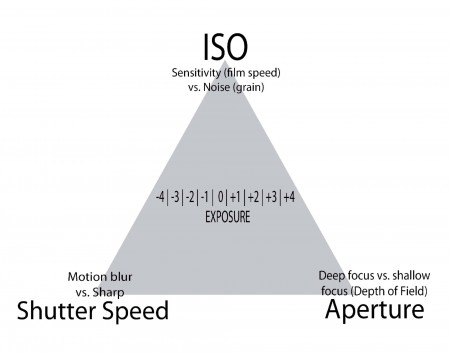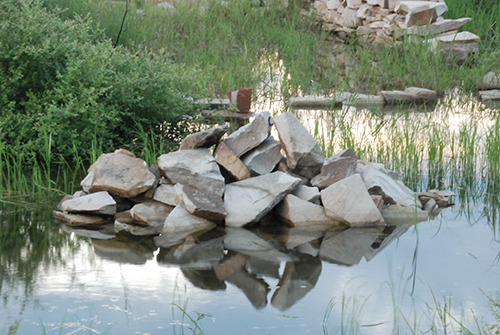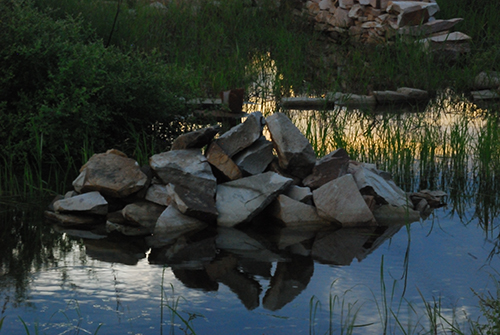
The last article “Does amount of light really matter?” invited some valuable comments and brought in some new ways of seeing exposure. Before we delve into the effects, let’s review some of the user comments we received:
I think that amount of light have also a direct impact in color saturation
— Jose
If you have people in a sunset situation, do you want them illuminated or silhouetted? Two very different lighting scenarios with two very different outcomes.
— photoman022
At times the amount of light does matter, others it’s direction, and yet in another situation neither are hinging factors. This may be the mystery and art of photography and the very reason for a lack of a cut-and-dry ‘do it like this’, ‘if-this then-that’ formula to making a great photo.
— Michael
I noticed that after a certain hour afternoon or evening, when the light becomes dimmer the colors loose their vibrance.
— Gavril Margittai
These are just some of the ways of looking at effects of amount of light. Let’s try to understand the relationship of amount of light & Exposure.
As we understand that shooting a photograph entirely depends on the amount of light goes through the lens (TTL) and falls on the sensor of the camera. Now possibly, there can be three kinds of exposure to the sensor of the camera. First is the insufficient amount of light, known as underexposure. Second is more than sufficient amount of light, known as overexposure. And the last is the optimal exposure — the ideal amount of light required to make the exposure.
How Much Is Our Eye Sensitive To Exposure?
Have you ever noticed why our eyes shrink and contract when we suddenly turn on the mercury light bulb in the black dark room? And why our eyes expand and try to open themselves as wide as they can, when we suddenly go into a very dark room from the bright sun light? They try to adjust the exposure by allowing less and more amount of light respectively, into the eyes. If the difference between the intensity of light is less, the iris of our eye adjusts itself for the same. And we don’t even notice these small changes in our eyes. These in fact are unnoticeable.
Camera works pretty much the same way, however even small intensity of light may have noticeable impact on the final image. In the barrel of the lens, there is an opening called aperture. Aperture controls the amount of light that enters the camera and reaches the sensor. The aperture is adjustable. It can be made smaller to allow less light or wider to let more light into the camera. Now how does a camera figure out the amount of light is there in the environment?
How Does A Camera Measures The Amount Of Light?
Camera has a through the lens (TTL) meter, which measures the amount of light entering into the camera. The meter sends the information to the microprocessor of the DSLR. The microprocessor then controls aperture opening, shutter speed and ISO (sensitivity of sensor) in the fashion of reciprocity.
As we know, image is formed on the sensor when light of a particular intensity falls on the sensor for a particular span of time. Shutter is a light proof curtain that guards the sensor against light beams. This span of time depends on the shutter speed; a high shutter-speed means the shutter remains open for a very short time thereby allowing light for a shorter period (or less light in essence). If the shutter speed is slow, it remains open for a longer period of time, eventually letting the light in for a longer period (thus more light gets captured by the sensor). Thus to maintain the correct exposure, if aperture is narrowed down, shutter speed must be reduced to compensate for the shutter’s setting. And if aperture is wide open, the correct exposure can be had provided the shutter remains open for a shorter span of time.
There is one last thing a camera sets to maintain the optimal exposure. This is sensitivity of the sensor itself and is known as ISO. If camera’s ISO is set to Auto, it will increase the sensitivity of the sensor to have correctly exposed image, if either aperture is narrower and also shutter speed is faster, or light intensity (as measured by TTL light meter) is not sufficient despite keeping the aperture wider and also shutter speed slower. Camera maintains the ISO to minimum if there is sufficient light in the scene to make a good exposure.
Thus the correct exposure of the image depends on (three factors) aperture, shutter and ISO. Any one (of the three factors) is proportional to the other factor, keeping the third (remaining one) factor untouched, will give the same exposure. Thus halving one and doubling the other keeps the exposure constant (given everything else remains same). Since there are three elements affecting the exposure viz. aperture, shutter-speed and the ISO, this analogy is often referred to as the exposure triangle.

Overexposure results in brighter midtones and blown out highlights but brings out lot of details from the shadows. Underexposure result in darker midtones, lost shadow details but retains a lot of detail in the highlights.
Many cameras offer various metering modes to calculate the exposure required for a particular scene. However, in essence all this tech-banter ultimately affects the colors, tones and more importantly the dynamic range of the photograph.
Underexposure tends to make everything darker, thus the colors look darker (and visually more saturated). The midtones & highlights in the scene become darker thereby giving the effect of added contrast while the details in the shadows are lost (look at the following images).

Regular Exposure (as calculated by the camera)

Underexposure results in saturated colors.
The degree of “amount of light coming into the scene” vs “the shadow areas” makes up the dynamic range of the scene. However the beauty lies in the fact that given everything else remains constant, just varying the amount of light doesn’t matter.
That’s the magic of the camera — to control the amount of light so it does not affect the exposure.
In the next part we’ll see how various metering modes affect the exposure and how to make the most of it.


How Much Is Our Eye Sensitive To Exposure?
“Have you ever noticed why our eyes shrink and contract when we suddenly go into a very dark room from the bright sun light? And why our eyes expand and try to open themselves as wide as they can, when we suddenly turn on the mercury light bulb in the black dark room?”
I do believe that the opposite is trure. Our eyes contactgoing from a dim source to a light one. Try going outside at noon from a dark room.
@Don: Thanks for pointing it out. Don’t know what I was thinking.